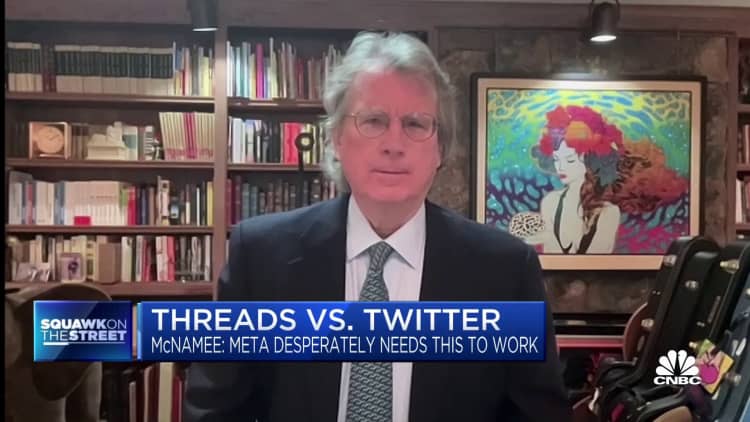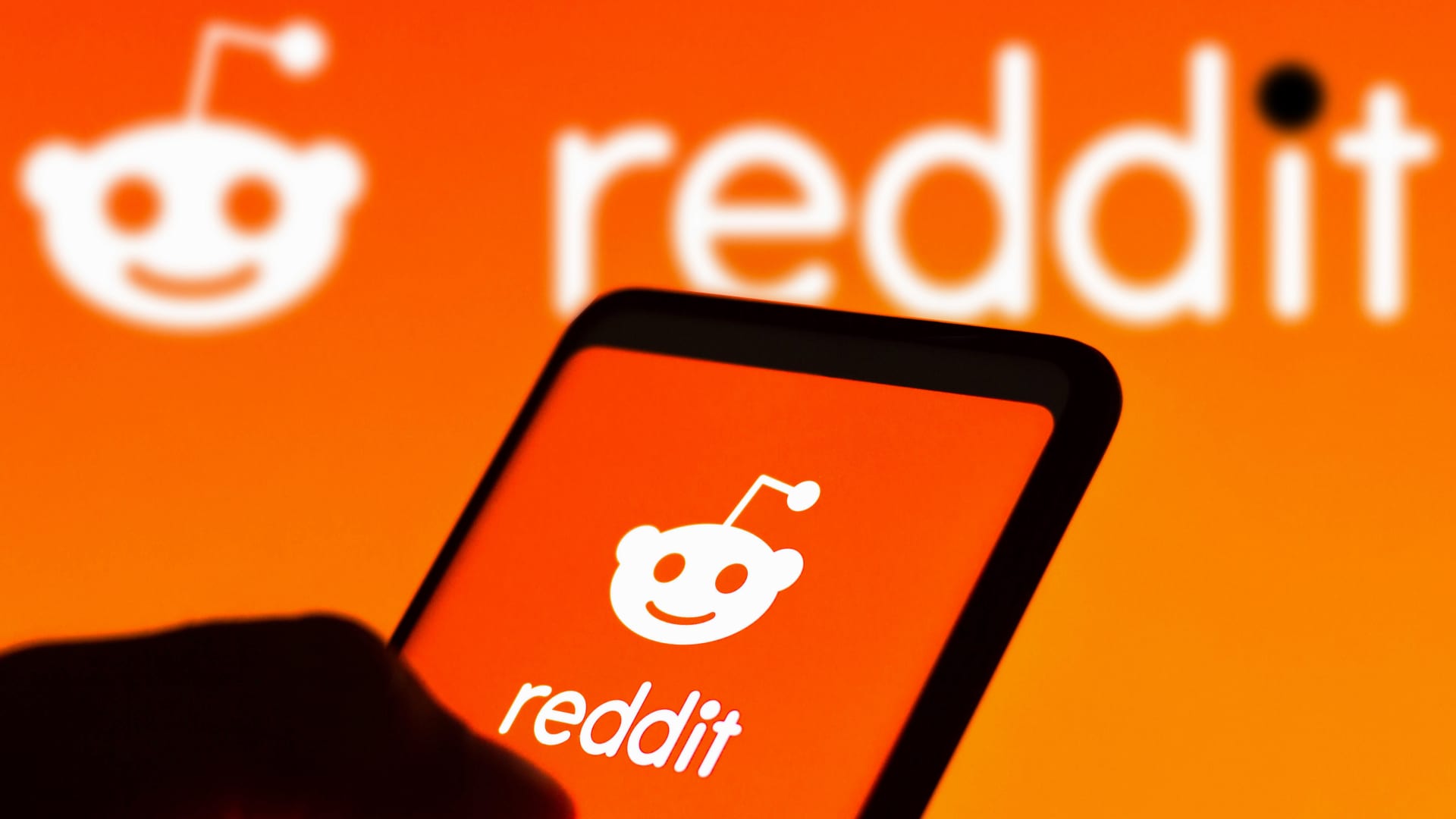
Mark Zuckerberg, CEO of Facebook, testifies remotely as Sen. John Kennedy, R-La., watches during the Senate Judiciary Committee hearing “Breaking the News: Censorship, Suppression, and the 2020 Election,” in Washington, Nov. 17, 2020.
Bill Clark | Reuters
Mother Jones CEO Monika Bauerlein has had a front-row seat in recent years to watch Facebook upend the media industry.
Bauerlein, who took over as CEO of the publication nine years ago, remembers when about 5 million users a month visited the Mother Jones website after coming across articles distributed on Facebook. That was in 2017.
But Facebook, now known as Meta, is out of the news business, a move that’s disrupted the traffic flow for many publications — Mother Jones has seen a 99% drop in Facebook referrals since its peak — and had disastrous consequences for some. In September, Meta said it would “deprecate” its Facebook news tab in European countries including the U.K., France and Germany as “part of an ongoing effort to better align our investments to our products and services people value the most.”
The push away from news followed years of public relations disasters for Facebook regarding the company’s handling of misinformation and its decisions on when to cancel accounts and remove posts. Conservative politicians have long accused the company of operating with a liberal bias, while groups on the other side portrayed Facebook as instrumental in the 2016 election of Donald Trump because of how Russian operatives exploited the site to boost his candidacy.
“At this point, it seems pretty clear from the comments that executives at Facebook and Meta made that they have just decided that news is more trouble than it’s worth and that they will show people a fairly minimal amount of it,” Bauerlein said in an interview.
At Mother Jones, a 48-year-old nonprofit magazine specializing in politics and investigations, the implications were dramatic. Though Facebook had generated millions of referrals a month for Mother Jones during its heyday, in November and December it generated just over 58,000 and 67,000 visitors, respectively, for Mother Jones, down from about 172,000 and 228,000 in the same months a year earlier.
An analysis of 1,930 news and media websites from over 370 companies conducted by the analytics firm Chartbeat for CNBC revealed that Facebook accounted for 33% of those publishers’ overall social traffic, measured by page views, as of December, down from 50% a year earlier.
As to all external traffic, which comes from social media and search engines such as Google, Facebook represented 6% of referral volume in December 2023, down from 14% in December 2018 and 12% in December 2022. That decline is mostly due to Facebook, as Google accounted for 38% of external traffic in December, up from 26% five years earlier and 36% in 2022.
Jill Nicholson, chief marketing officer at Chartbeat, said Facebook’s social traffic decline stems from several moves at Meta, including banning Canadian users last year from sharing news on its apps after Canada’s federal government passed the Online News Act, which forced tech companies to pay content fees to domestic media outlets.
Nicholson said a similar ban by Meta in Australia in 2021 ended up “making news less accessible” in general. Facebook eventually reversed that decision after reaching a deal with the Australian government.
Meta’s strategy
Meta CEO Mark Zuckerberg is showing little interest in wading into hot-button issues on politics and global affairs after taking numerous trips to Capitol Hill following the 2016 election. Since changing his company’s name to Meta in late 2021, Zuckerberg has been focused on investing billions of dollars a quarter to develop the futuristic metaverse while trying to fend off competition from TikTok by bolstering Reels, Meta’s short-form video product that’s used by creators.
His strategy is paying off on Wall Street. Meta’s stock closed at a record Friday, as it continues to rally following an almost 200% pop last year.
David Carr, senior insights manager at analytics firm Similarweb, said Meta’s changing approach to news isn’t all about Zuckerberg’s preferences. Users are also tired of all the online bickering.
“One of the things that Facebook has talked about as a justification or a reason why they’re making some changes is that people are happier using the service when they don’t see all that political stuff,” Carr said.
A Meta spokesperson, echoing previous statements from company executives, said the shift away from news has been driven by user behavior.
“We know that people don’t come to Facebook for news and political content — they come to connect with people and discover new opportunities, passions and interests,” the spokesperson said. “We’ve made several changes to better align our investments to our products and services people value the most.”
More than just hot-button issues
In de-emphasizing news, Meta hasn’t just minimized contentious political debates. It’s made it harder for publications of all types and sizes to circulate stories to Facebook’s 3 billion monthly users.
Data from Similarweb showed that the top 100 global news publishers saw Facebook referral traffic plummet in 2023 from 2022 following a steady decline over several years.
Facebook represented 2.7% of the Daily Mail’s global referral traffic in November 2023, a decline from 6.5% in November 2020 and 3.8% in November 2022, according to Similarweb. For The Independent, Facebook’s contribution dropped to 1.3% of traffic in November from 6.5% three years earlier and 4% in 2022.
Publications have had to adapt, finding other ways to draw in traffic. For some ad-based sites that needed the big Facebook numbers to make money, the change was existential.
BuzzFeed, once known for viral posts and videos, shut down its BuzzFeed News site in April. The company still owns news site HuffPost, but its main site largely contains entertainment content, quizzes and videos.
The company has a market cap of under $35 million — nine years after Comcast-owned NBCUniversal, the parent company of CNBC, invested at a $1.5 billion valuation. BuzzFeed’s estimated Facebook referral traffic was 12% in November 2023, down from 15% a year earlier, according to Similarweb.
Vice Media, which was valued at $5.7 billion in 2017, declared bankruptcy in May.
Alternate routes
Some top media brands experienced a bigger drop in Facebook traffic in earlier years as they recognized over time the need to diversify their sources of distribution. Across the media industry, news organizations have been steadily weaning themselves from reliance on Facebook.
Sam Cholke, an audience growth and distribution manager for the Institute for Nonprofit News, cited The Texas Tribune and Montana Free Press as examples of publications that are taking other routes to finding readers. The Texas Tribune, an online nonprofit paper launched in 2009, is leveraging in-person events to attract readers, while the Montana Free Press, started in 2016 by journalist John S. Adams, is running billboard ads in the capital city of Helena.
BuzzFeed CEO Jonah Peretti told analysts on his company’s earnings call in August that he’s “laser-focused” on a new strategy involving the use of artificial intelligence to help generate content in addition to relying more on creators.
“As Facebook and other major tech platforms continue to prioritize vertical video, traffic referrals from these platforms to our content have diminished,” Peretti said on the call.
Jessica Probus, BuzzFeed’s publisher, told CNBC in an interview that BuzzFeed’s “biggest shift” in its Facebook and audience strategy occurred around 2021. While there was a “slow trickle decline for a long time,” the major “turning point,” she said, occurred when Meta began going more directly after TikTok.
BuzzFeed decided to “take an even bigger emphasis on our own properties,” which included its core app and website as well as others such as HuffPost and Tasty.

BuzzFeed is looking for other ways to make money, which includes selling sponsorships, subscriptions and memberships, and a commerce business that’s “monetized through transactions, things that people are buying through our site,” Probus said.
‘Firehose of Facebook traffic’
Because Mother Jones is a nonprofit and relies on donors and subscribers rather than primarily ads, Bauerlein said the publication has been able to weather the social media storm better than others.
“The firehose of Facebook traffic was never going to pay for our journalism, for the majority of our journalism,” Bauerlein said. Regarding the pursuit of traffic by media upstarts, Bauerlein said, “a lot of venture capital was burned in the process.”
Bauerlein said Mother Jones has still managed to attain more Facebook followers than ever before, which she said points to the level of consumer appetite for its stories even if they’re harder to find.
“Now, you’re just not seeing that information that you chose to see,” Bauerlein said. That’s “a real broken promise to the users, especially at a time when the world is incredibly complicated and incredibly hard to understand.”
Cholke said that when it comes to Facebook and news, the writing has been on the wall for years. Last decade, many publishers saw their “social traffic decline pretty dramatically,” with Facebook deprioritizing text-based articles in favor of video content, Cholke said. In 2019, Facebook paid $40 million in a settlement to advertisers who alleged in a lawsuit that the company overinflated its video metrics, resulting in higher-priced video ads.
“For a lot of people, me included, it was one of the first signals that we’ve got to get smart about this,” Cholke said.
The 400-plus North American media outlets associated with the Institute for Nonprofit News are scrambling to find ways to reach readers, Cholke said. Some publishers are doubling down on Google search traffic, a strategy that poses other risks.
Last year, for example, a bug in Google Discover, a personalized news and content feed, caused traffic to decline for a number of publishers.
On top of the changes at Facebook, that’s led to the question: “What are the other options?” Cholke said.

Chartbeat’s Nicholson said one site that’s being used is YouTube, where “some are branching out into monetizing social video.” But for the most part, she said, publications have to rely more on “their own operated platforms,” where traffic patterns are less volatile.
“When those trends started going downward for social in terms of a referral source, that is where people really got into the business of diversification, investing more into newsletters and apps,” Nicholson said.
‘A diminishing return’
Longtime media columnist Mathew Ingram, a chief digital writer at the Columbia Journalism Review, said Facebook was “never a good place” for news, because it “focused on emotion and sharing for other purposes” rather than on seeking the truth.
That was true even when Facebook focused on news. But when the platform began pushing news stories down, the economics stopped working.
“In order to keep your traffic and all your numbers where they were, you just try three times as hard, and then eventually, you’re sort of blowing all this time and resources for a diminishing return,” Ingram said.
Data from the Pew Research Center shows that TikTok is taking some market share when it comes to where consumers get their news.
In a study published in November, Pew found that the percentage of U.S. adults who say they regularly turn to TikTok for news has more than quadrupled since 2020 to 14% from 3%. Elisa Shearer, a senior researcher at Pew, told CNBC that over that stretch the portion of Facebook users who said they regularly get news on the site has dropped to 43% from 54%.
But the way people access news on TikTok is different. Rather than seeing links to stories from outside publications, the news tends to be delivered by influencers in short videos. That makes it a particularly poor source of traffic for media outlets.
Still, Bauerlein said Mother Jones is building a bigger presence on TikTok as well as Instagram because the publication wants to find consumers where they are and “serve people who are looking for trustworthy information,” she said.
“If we all end up finding news in the metaverse, then you’ll be finding Mother Jones in the metaverse,” she said. What Mother Jones won’t do, she said, is “bet everything on one platform, because that never works out.”
Disclosure: Comcast-owned NBCUniversal is the parent company of CNBC.
WATCH: We can’t trust Instagram with our teens over child safety








